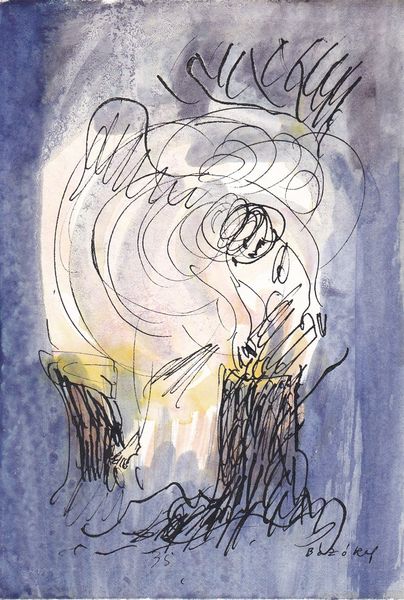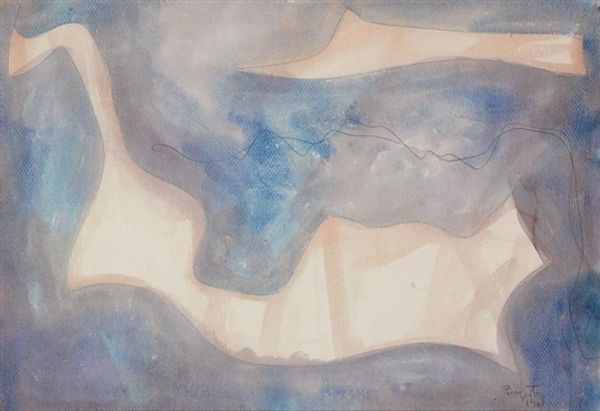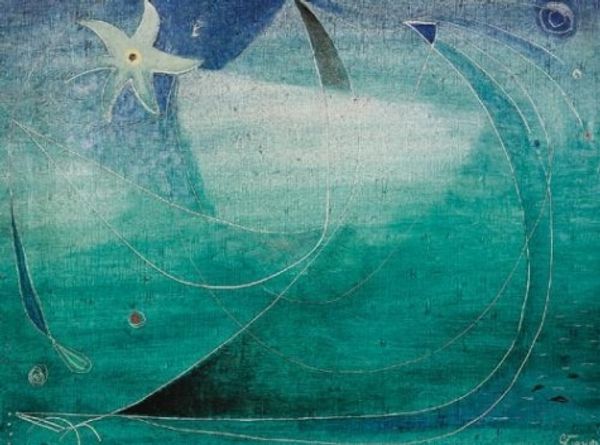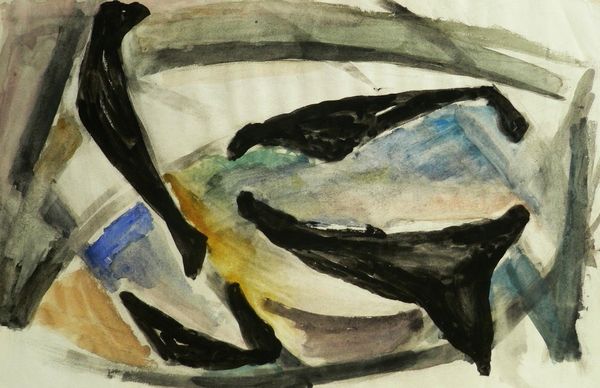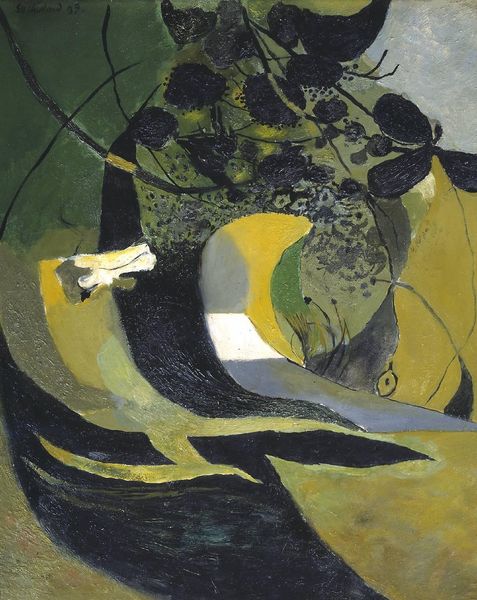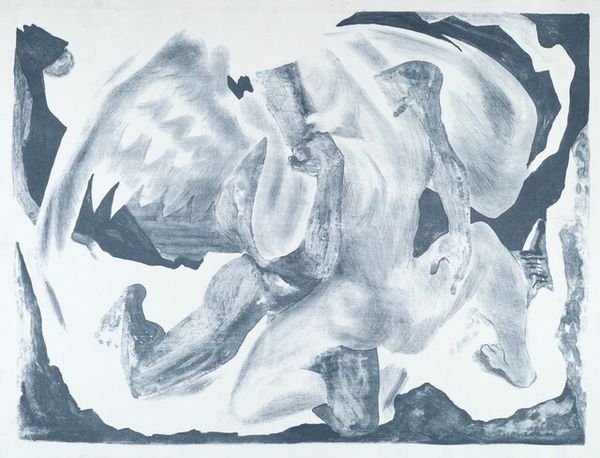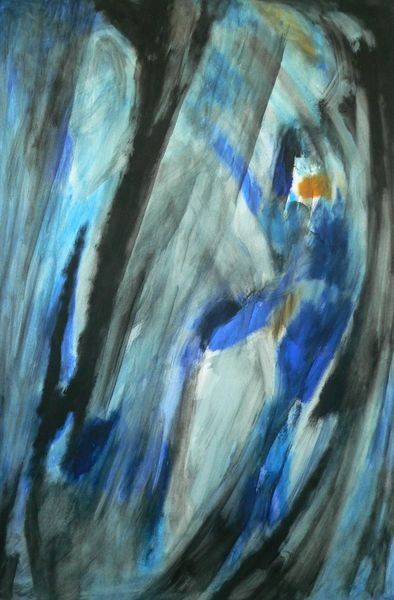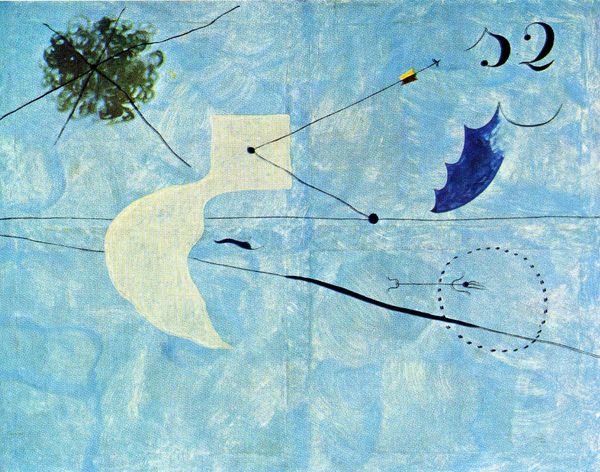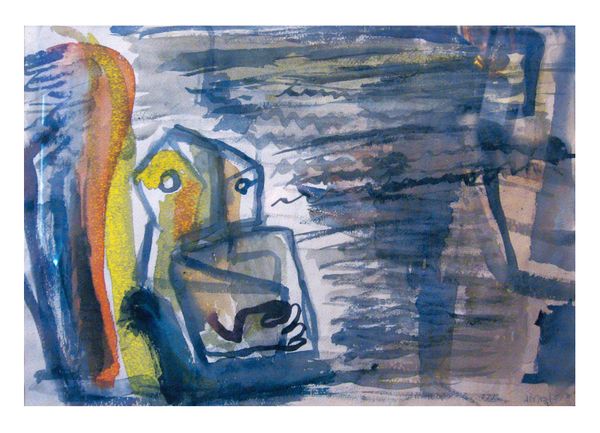
watercolor
#
abstract-expressionism
#
abstract expressionism
#
abstract painting
#
painted
#
form
#
watercolor
#
abstraction
#
line
Copyright: William Baziotes,Fair Use
Editor: Here we have William Baziotes’s "Watercolor #1," created in 1958, appropriately using watercolors on paper. The forms are quite arresting, dark against a yellow ground. What do you see in this piece? Curator: As a materialist, I’m drawn to the *how* of this painting as much as the *what*. Watercolors in the 1950s, were still, to some extent, not fully embraced as a serious fine art medium. The decision to use watercolor signals a certain intention by Baziotes, pushing against the boundaries of "high" art at the time, almost daring to be considered a mere craftsperson. The paper, too, bears significance; its quality, its texture – all choices contributing to the final product. Do you notice anything specific about the ways the watercolor sits on the paper? Editor: Yes, now that you point it out, it doesn’t look like smooth, high-end paper. Some of the colors bled into it unpredictably. How does that fit into his aims? Curator: It is an uncontrolled, very fluid gesture with a casualness that directly challenges notions of labor as virtuosity. The abstraction, then, isn’t just about form; it's a social act tied to production, consumption, and the re-evaluation of artistic labor, particularly as labor shifts after World War II, a historical transformation embedded within art itself. Editor: So, it's like the medium itself makes a statement? Curator: Precisely! Consider the post-war social context and artistic landscape. Artists questioned traditional norms, rebelling against the idea of art as merely representation. Think about how Baziotes would have encountered debates around what makes 'good' art in that moment in history, what and whom his choice in media pushes against or elevates. What does watercolor enable here that oil, say, does not? Editor: It seems so immediate, so raw. I’d initially overlooked that. Now I see it less as an image, and more as… a process. Thanks! Curator: Indeed, we see how the medium actively shaped the message and what the social implications might be of that decision.
Comments
No comments
Be the first to comment and join the conversation on the ultimate creative platform.

